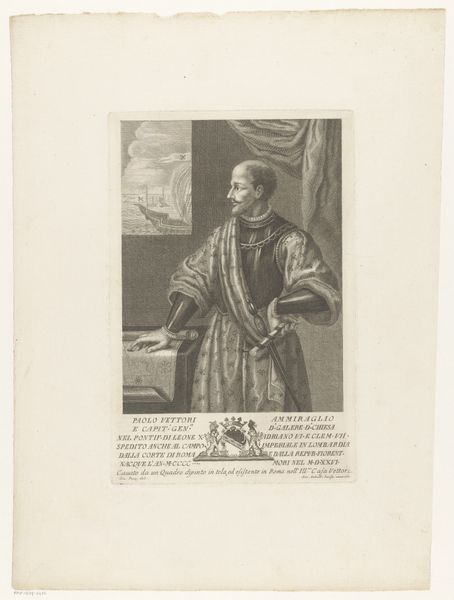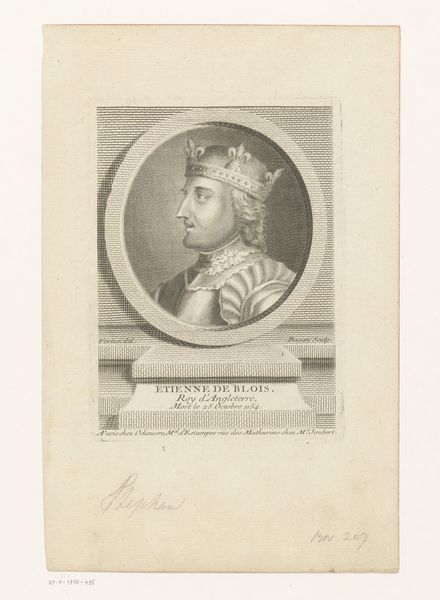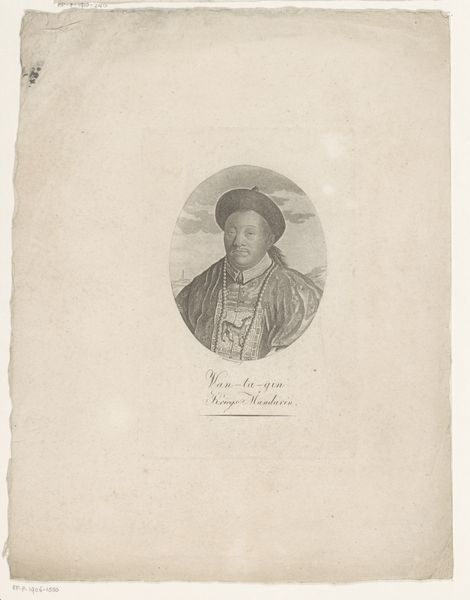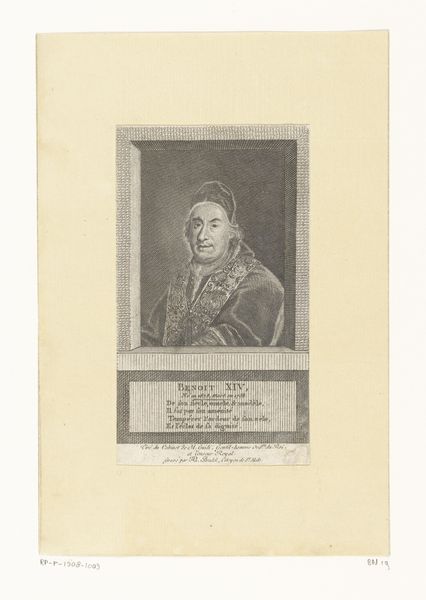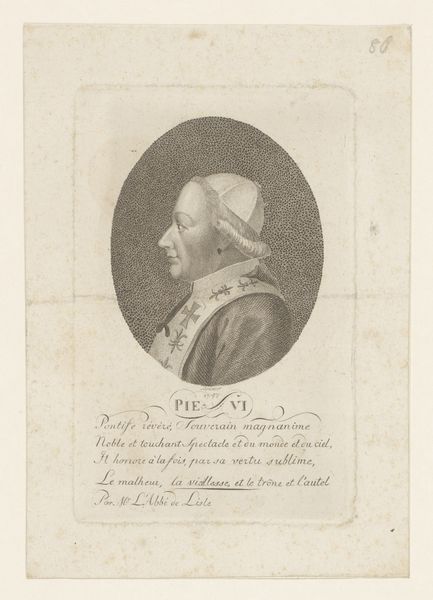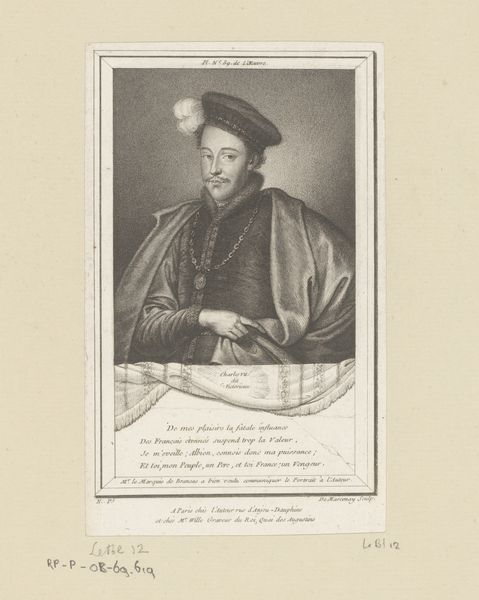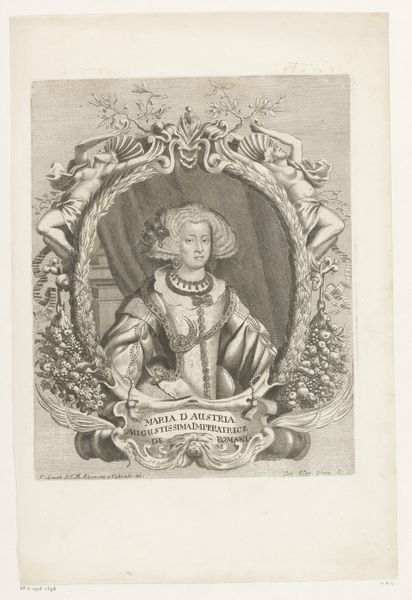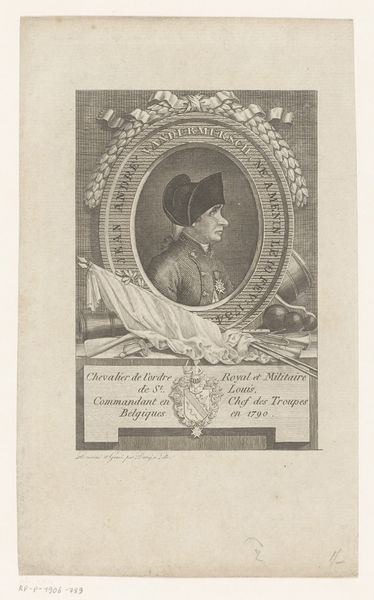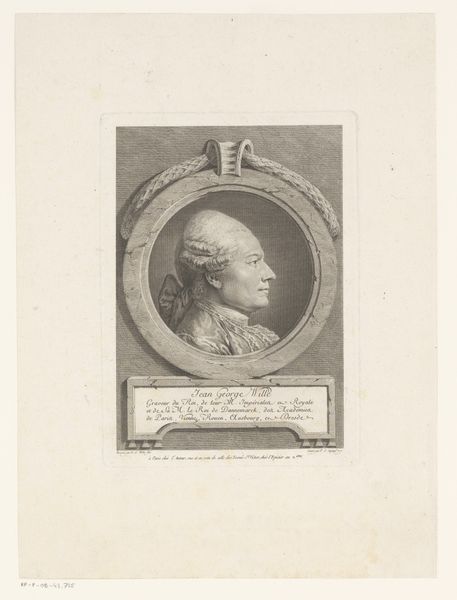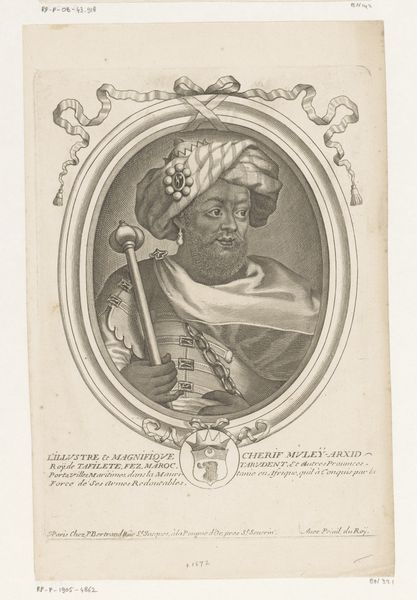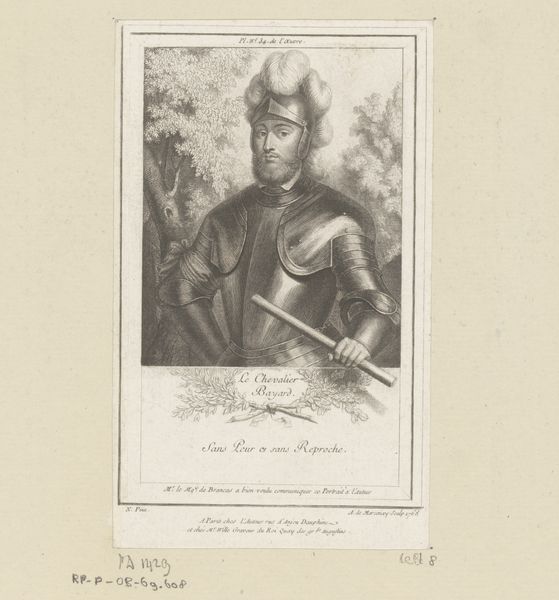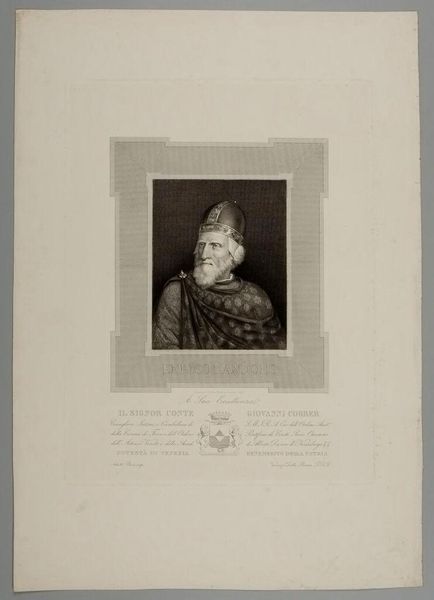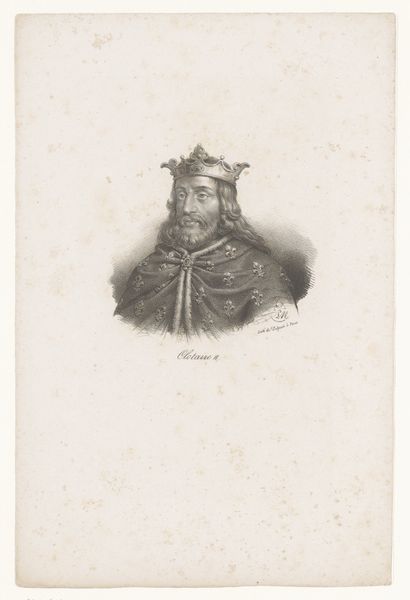
engraving
#
neoclacissism
#
old engraving style
#
history-painting
#
engraving
Dimensions: height 151 mm, width 92 mm
Copyright: Rijks Museum: Open Domain
Editor: So, here we have an engraving from 1767 by Antoine de Marcenay de Ghuy. It's a portrait of Charles V, King of France. I'm immediately struck by its formality; the details are so precise, almost stiff. What jumps out at you? Curator: It’s like stepping back in time, isn’t it? Beyond the king’s serious gaze, notice the fleur-de-lis scattered on his robe. These weren't mere decorations; they were bold statements of royal authority, deeply interwoven with French identity. It's not just a likeness, but a constructed image meant to project power and legitimacy. Doesn't that level of carefully crafted symbolism speak volumes? Editor: Absolutely! The fleurs-de-lis really pop. Do you think the artist included them for that reason, as pure symbolism, or to document the style of the era accurately? Curator: Probably both! This engraver was working within the Neoclassical movement, known for its interest in historical accuracy and moral virtue, yet still in service of representing power. Think of it like a stage play: every costume piece, every gesture, is meticulously planned to convey a specific meaning to the audience. Editor: That makes total sense. So, the engraving is trying to tell us a story as much as show us the king? Curator: Exactly! It wants us to think about leadership, legacy, and the enduring strength of the French monarchy. Editor: That’s given me a completely new way of seeing it. It’s much more layered than I first realized. Curator: It always is. Looking closely always reveals stories we never expected.
Comments
No comments
Be the first to comment and join the conversation on the ultimate creative platform.
